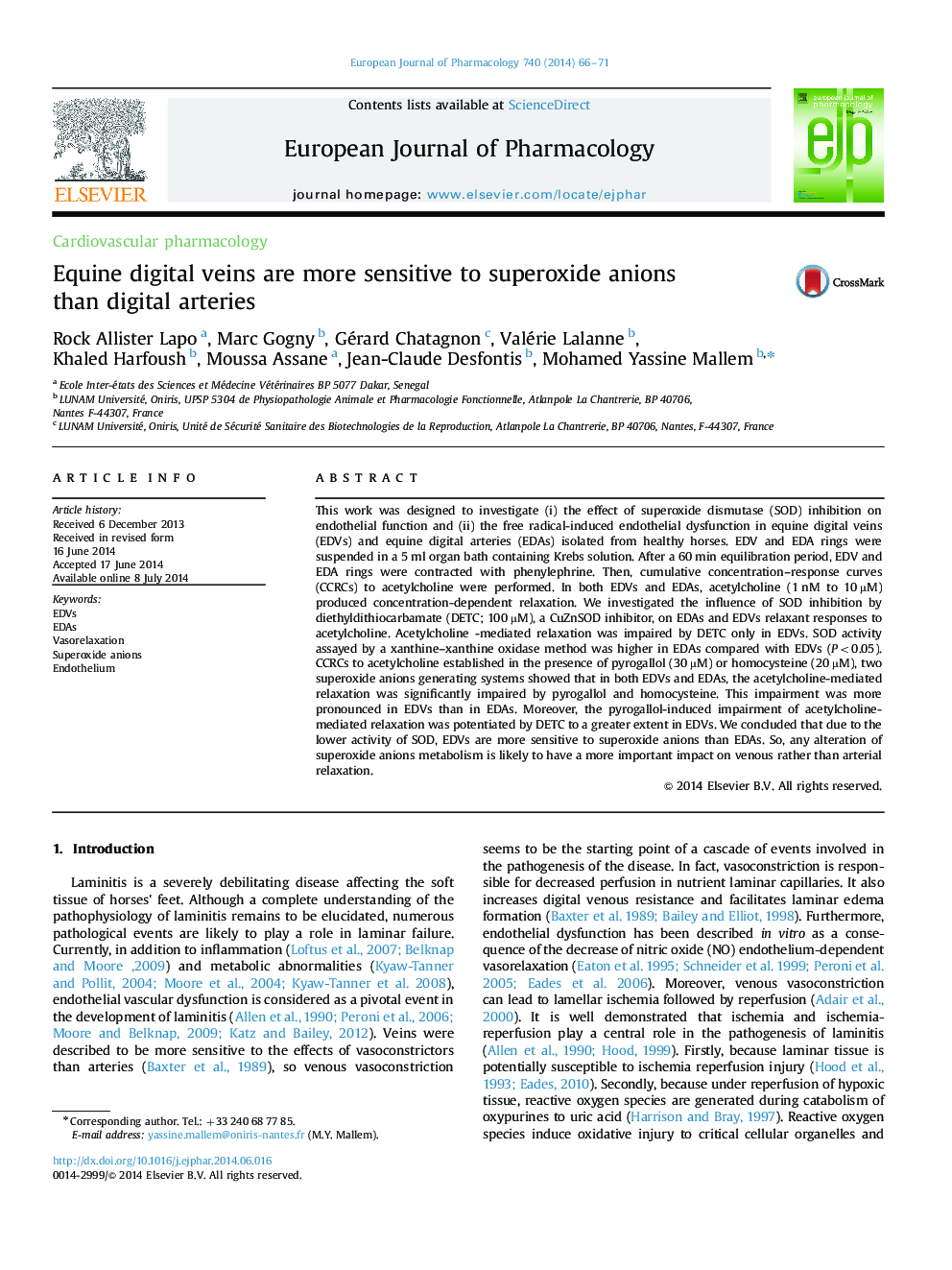| Article ID | Journal | Published Year | Pages | File Type |
|---|---|---|---|---|
| 2531645 | European Journal of Pharmacology | 2014 | 6 Pages |
This work was designed to investigate (i) the effect of superoxide dismutase (SOD) inhibition on endothelial function and (ii) the free radical-induced endothelial dysfunction in equine digital veins (EDVs) and equine digital arteries (EDAs) isolated from healthy horses. EDV and EDA rings were suspended in a 5 ml organ bath containing Krebs solution. After a 60 min equilibration period, EDV and EDA rings were contracted with phenylephrine. Then, cumulative concentration–response curves (CCRCs) to acetylcholine were performed. In both EDVs and EDAs, acetylcholine (1 nM to 10 µM) produced concentration-dependent relaxation. We investigated the influence of SOD inhibition by diethyldithiocarbamate (DETC; 100 µM), a CuZnSOD inhibitor, on EDAs and EDVs relaxant responses to acetylcholine. Acetylcholine -mediated relaxation was impaired by DETC only in EDVs. SOD activity assayed by a xanthine–xanthine oxidase method was higher in EDAs compared with EDVs (P<0.05). CCRCs to acetylcholine established in the presence of pyrogallol (30 µM) or homocysteine (20 µM), two superoxide anions generating systems showed that in both EDVs and EDAs, the acetylcholine-mediated relaxation was significantly impaired by pyrogallol and homocysteine. This impairment was more pronounced in EDVs than in EDAs. Moreover, the pyrogallol-induced impairment of acetylcholine-mediated relaxation was potentiated by DETC to a greater extent in EDVs. We concluded that due to the lower activity of SOD, EDVs are more sensitive to superoxide anions than EDAs. So, any alteration of superoxide anions metabolism is likely to have a more important impact on venous rather than arterial relaxation.
Graphical abstractFigure optionsDownload full-size imageDownload high-quality image (269 K)Download as PowerPoint slide
